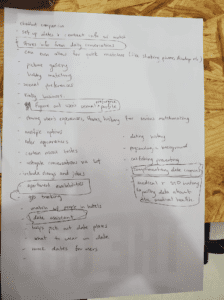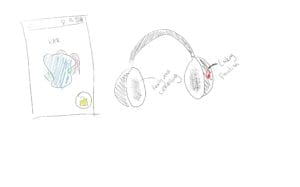For our project, the frameworks that we had to focus on were Commercial Agenda, Problem Solving, and Persuasive Design.
Problem:
Since we were already given a problem during class when Eric’s interview video was brought up and his problem with meditation arose, we decided to focus our product on resolving that. Eric already learned how to meditate but had trouble getting into the habit of meditating or making it part of his daily routine because of the time constraints that he has. Due to this, we decided to focus on our Persuasive Design in making Eric turn meditating into a habit that comes naturally and is integrated in his daily life.
Inspiration and Solution:
To solve this problem, we decided to use Figg’s tiny habit behavioral model where we had a trigger, action, and reward; this was a process that we hoped our product would be able to naturally implement. How we decided on our Zen Care toothbrush was based on the idea that brushing his teeth was an action that Eric would have to do at least once during the day. Using that, we found inspiration from products such as Tooth Tunes and decided to recreate the product into a meditation instigator.
Product:
At first we thought of a product that would play relaxing meditation audio guides and songs while the user brushes their teeth as a way of creating an efficient and helpful product for users such as Eric who might lack the time to do something but still want to fit it into their schedule. We thought of a toothbrush with a curved rubber handle as well as a charging dock that would allow for a personalized timer that users could change based on how long they typically brush their teeth.
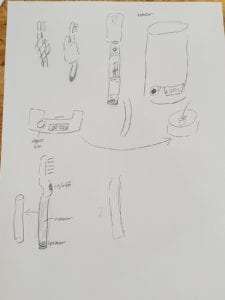
Product Iteration:
After discussing with other possible users and individuals we all thought that meditating while brushing their teeth may hinder the users ability to properly meditate. Instead, we drifted away from the toothbrush and decided to focus on creating a charging dock that would allow the user to play meditating songs and audio guides once the user sets down their toothbrush as a sign that the user has now finished brushing their teeth. This would allow for more flexibility for our product since the charging dock will then be compatible with many different electrical toothbrushes.

Commercial and Future Implementation:
Based on our commercial agenda, we also decided to create possible packaging designs as well as our possible brand slogan and name. We decided on Zen Care because it was a name that gave us the opportunity to possibly expand into other bathroom accessories and utilities such as a razor or hairbrush set and not just a toothbrush charging dock. We decided on the specific packaging design based on the age range of our target audience which was around 20-30 year olds and used that as inspiration to create unconventional shapes for packaging. All in all, our product had the potential to sell and also create a large range and variety of other products as well.
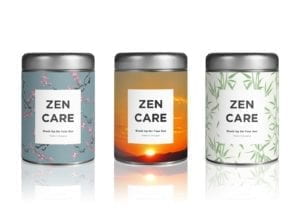
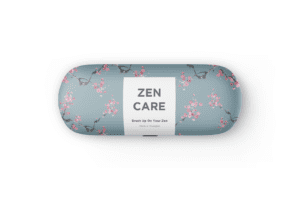
Reflection:
I think that the judges made a good point that maybe what we were trying to focus on was not meditation but rather mindfulness. Perhaps it would have been more helpful or easier for the user to feel calm and collected when brushing their teeth instead. The product may have instigated an uncomfortable location for the user to meditate or is not the ideal way to go about meditating. However, I do think that our product is one that is capable of using the persuasive design technique in order to create a habit for the user to meditate more. It may not have provided the most ideal setting or set up to achieve the best experience for our user but I do think our product was capable of solving the problem through our design frame works and restrictions successfully. I do think that we focused a lot on the commercialization of our product that we did not stop to consider how this product would play out or sell in the long run.
